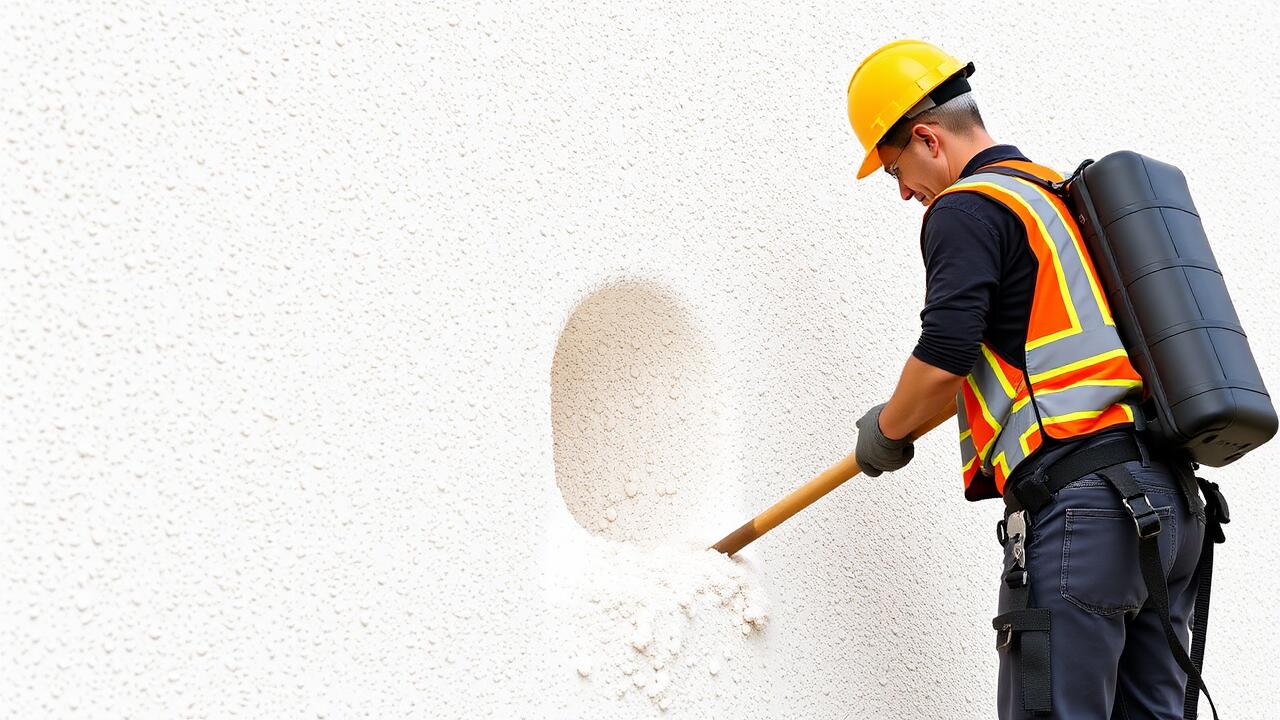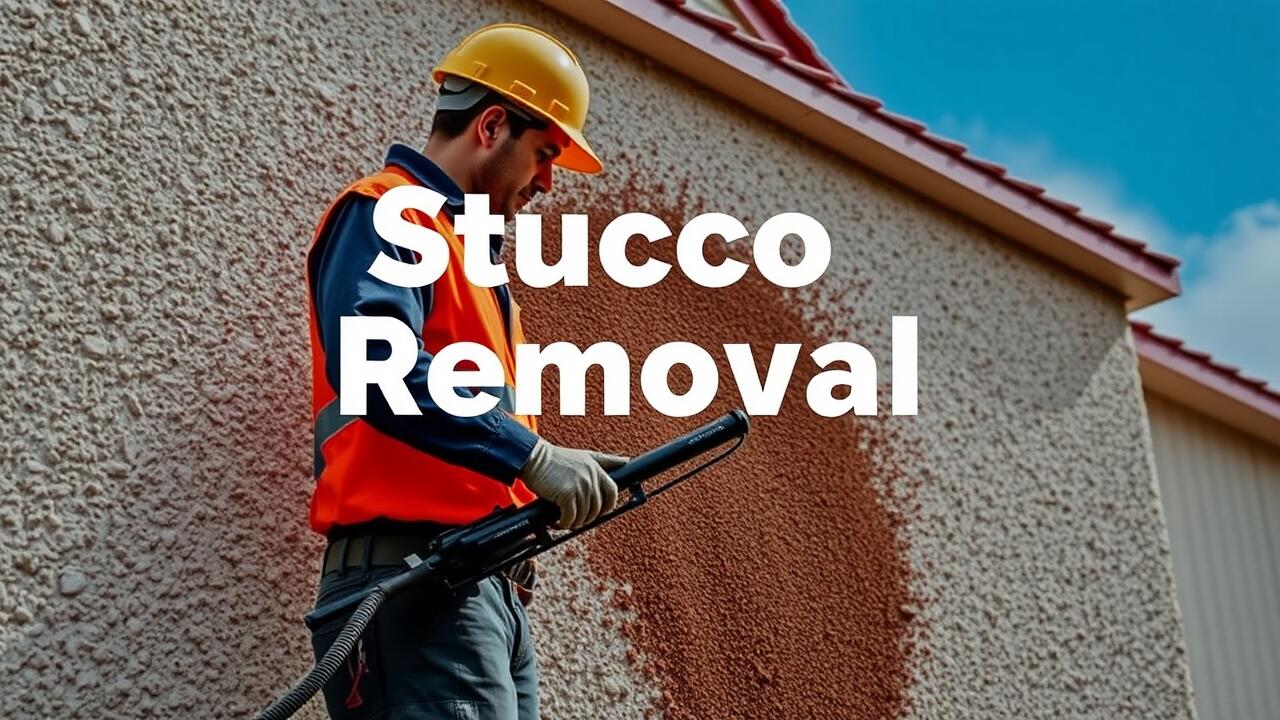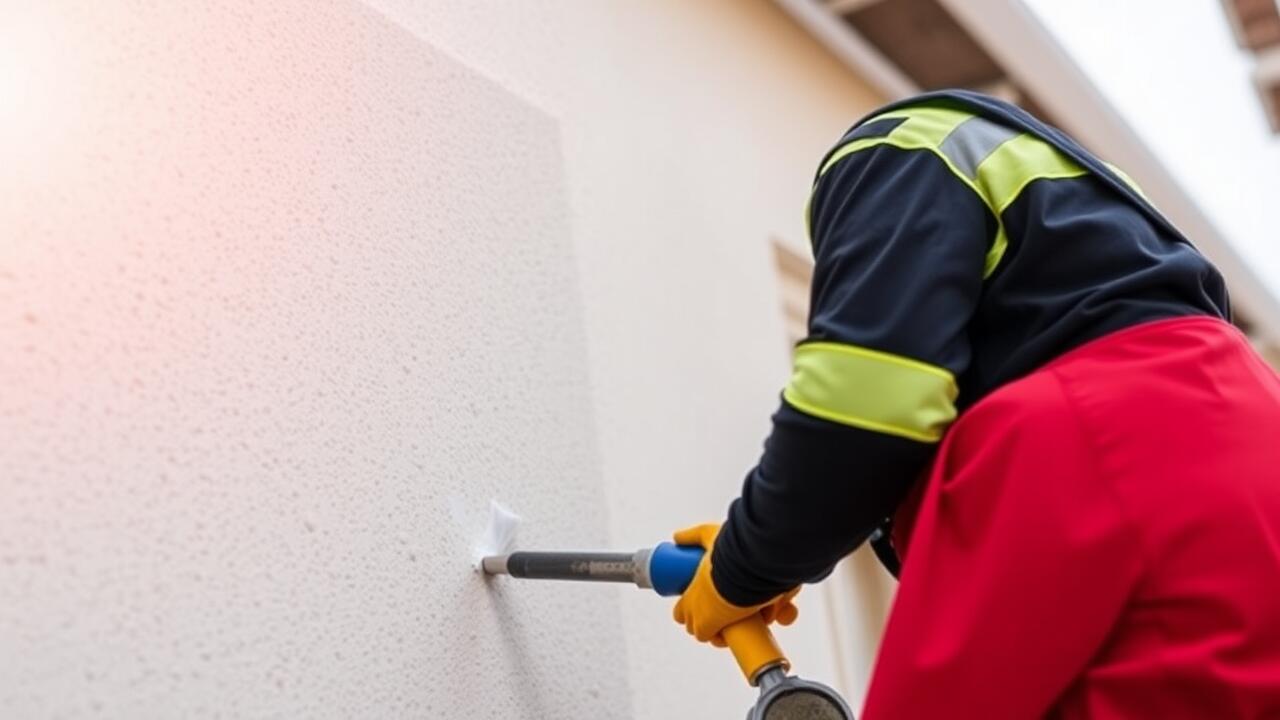
Applying the Patch
Patching a stucco wall requires attention to detail and the right materials to ensure a seamless repair. Begin by cleaning the area around the damage. Remove any loose stucco and debris using a wire brush or scraper. If the wall has deep cracks or holes, it may be necessary to apply a bonding agent to help the new material adhere properly. This is especially important for regions experiencing fluctuations in weather, such as Mid-Wilshire, Los Angeles, where moisture levels can affect the durability of repairs.
Once the surface is prepped, mix the stucco patching compound according to the manufacturer's instructions. Using a trowel, carefully apply the mixture to the damaged area, ensuring it fills any voids or gaps. Aim for a smooth, even surface that matches the surrounding wall as closely as possible. Allow the patch to cure according to the recommendations provided. Proper curing is essential for achieving a strong bond and preventing future issues.
Step-by-Step Application Process
Start by thoroughly cleaning the area around the damage. Use a wire brush to remove any loose stucco or debris, ensuring a clean surface for the patch. If there are larger cracks or holes, it may be necessary to use a chisel to expand the opening slightly. This will help the new material bond better to the existing stucco. Once the area is prepped, dampen the exposed surfaces with a sponge to prevent moisture absorption from the patching material.
Mix the stucco patch according to the manufacturer’s instructions. Apply the patch using a trowel, starting at the edges and working towards the center of the damaged area. Press the material firmly into place, ensuring it fills the gap completely. Feather the edges of the patch to blend seamlessly with the surrounding stucco. For those considering professional help, companies specializing in Mid-Wilshire, Los Angeles Stucco Removal can ensure a flawless finish if needed.
Finishing the Repair
Once the patched area has dried completely, it’s important to focus on achieving a smooth finish. Use a trowel or a putty knife to gently blend the edges of the repair with the surrounding stucco. This process may require multiple passes, gradually feathering the edges to create an even transition. Sanding can also help refine the area, but it is essential to be cautious not to oversand and disrupt the overall texture of the wall. Proper attention to detail at this stage will make a significant difference in the final appearance.
After achieving a satisfactory finish, applying paint to the area will provide protection and enhance the aesthetics of the repair. For the best results, it’s crucial to select a paint that matches the original color and texture of the stucco. A quality primer can help the paint adhere better and ensure durability against the elements. Residents seeking professional assistance may consider services such as Mid-Wilshire, Los Angeles Stucco Removal for expert guidance and support, ensuring a seamless repair and a flawless look.
Techniques for Achieving a Smooth Surface
Achieving a smooth surface on a patched stucco wall requires careful attention to detail. After applying the patch material, use a trowel to flatten and blend the new stucco with the surrounding area. Feathering the edges of the patch is essential to create a seamless transition. Work in small sections, and don't rush this step; taking your time will ensure a better finish. For larger patches, consider using a knockdown method with a brush or spray applicator to match the texture of the existing stucco.
Once the initial patch has dried, you may find that further smoothing is necessary. Lightly sand the area with fine-grit sandpaper to remove any imperfections. Always wear a mask to protect against dust inhalation during this process. If you require professional assistance to ensure a perfect finish, Mid-Wilshire, Los Angeles Stucco Removal offers expertise tailored to your needs. Proper preparation will ultimately allow for a more seamless integration of paint and texture.
Painting Over the Patch
Choosing the right paint and primer for your stucco wall repair is essential for achieving a consistent appearance. A high-quality, exterior-grade primer can help improve adhesion and ensure that the paint covers the patch effectively. For stucco surfaces, it is often recommended to use a paint specifically designed for textured or masonry surfaces. Ensure that both products are suitable for outdoor use to withstand the elements.
Before applying paint, allow the patch to cure properly. This process may take several days to ensure that the stucco has fully set. When ready to paint, start with the primer, applying it evenly over the patched area. Once dry, you can proceed with the paint, using a roller or brush depending on the texture of the wall. If you’re in areas such as Mid-Wilshire, Los Angeles, where stucco removal and repairs are common, consider consulting local professionals for advice on paint that best matches your existing exterior.
Selecting the Correct Paint and Primer
Choosing the right paint and primer for your stucco wall is crucial for achieving a lasting finish. When selecting a primer, look for one specifically formulated for masonry or stucco surfaces. These primers help ensure better adhesion and prevent moisture from seeping through. Moreover, a good quality primer can enhance the longevity of the paint, making your patched area blend seamlessly with the rest of the wall.
For the paint, opt for a breathable exterior paint that is resistant to fading and mildew. Water-based acrylic paints are often a suitable choice since they expand and contract with the stucco, reducing the risk of cracking. If you are in the area of Mid-Wilshire, Los Angeles, consider consulting local suppliers who specialize in stucco products. They can guide you in selecting the ideal paint and primer to protect your repair and maintain the aesthetic appeal of your home.
FAQS
What materials do I need to patch a stucco wall?
To patch a stucco wall, you will need a stucco repair mix, a trowel, a putty knife, a mixing bucket, water, a sponge or brush, and a paintbrush for finishing touches.
How long does it take for the stucco patch to dry?
The drying time for a stucco patch can vary based on environmental conditions, but it typically takes about 24 to 48 hours for the patch to cure completely.
Can I paint over the patch right after it dries?
It's best to wait until the patch has fully cured before painting over it. This can take up to a few days, depending on humidity and temperature.
What type of paint should I use for a patched stucco wall?
It's recommended to use an exterior acrylic paint with a primer designed for stucco surfaces to ensure proper adhesion and durability.
How can I achieve a texture that matches the existing stucco?
To match the existing texture, use techniques such as a sponge, brush, or trowel to replicate the pattern of the surrounding stucco while the patch is still wet. You may also consider using a texture spray or finishing tool specific for stucco.



